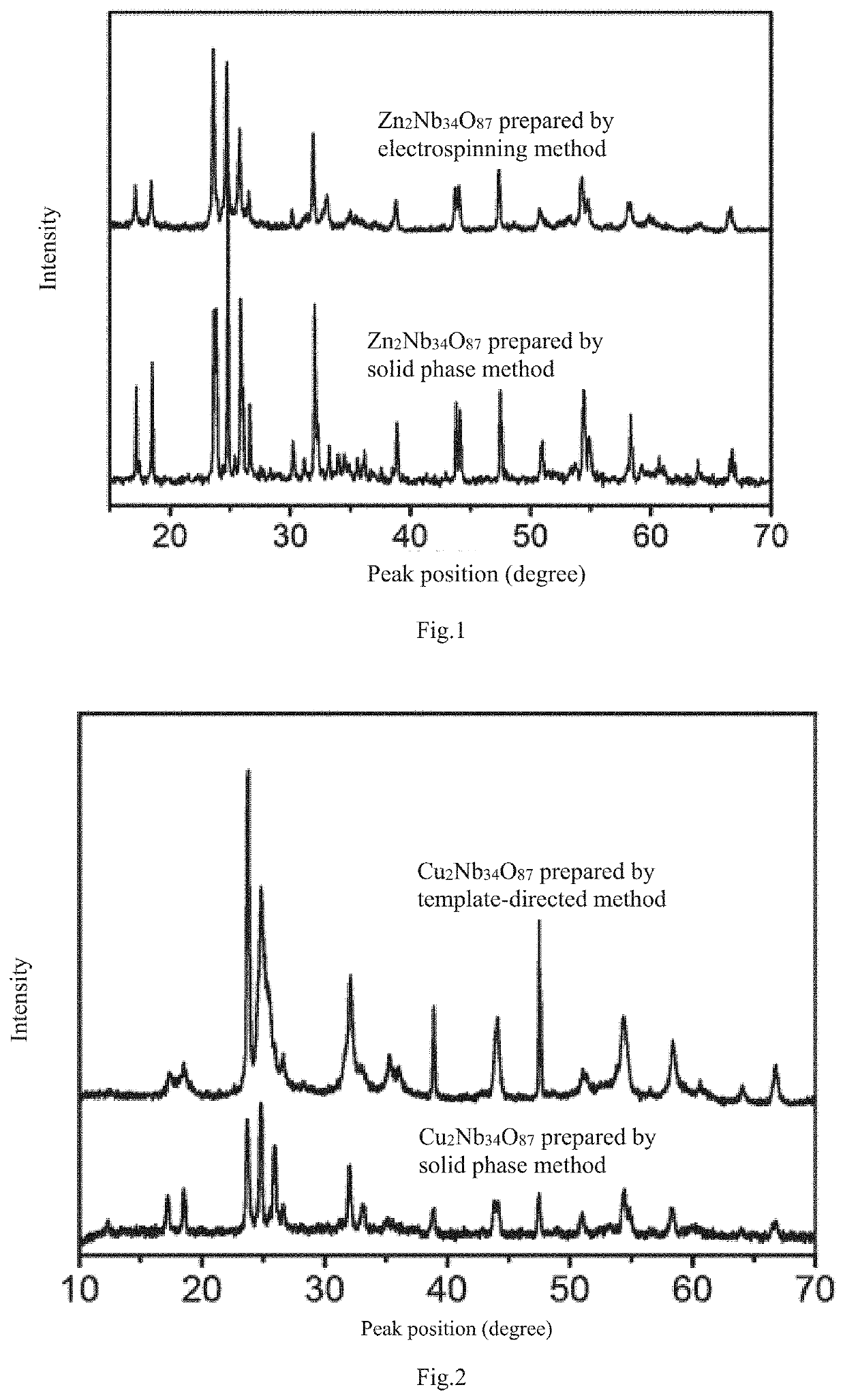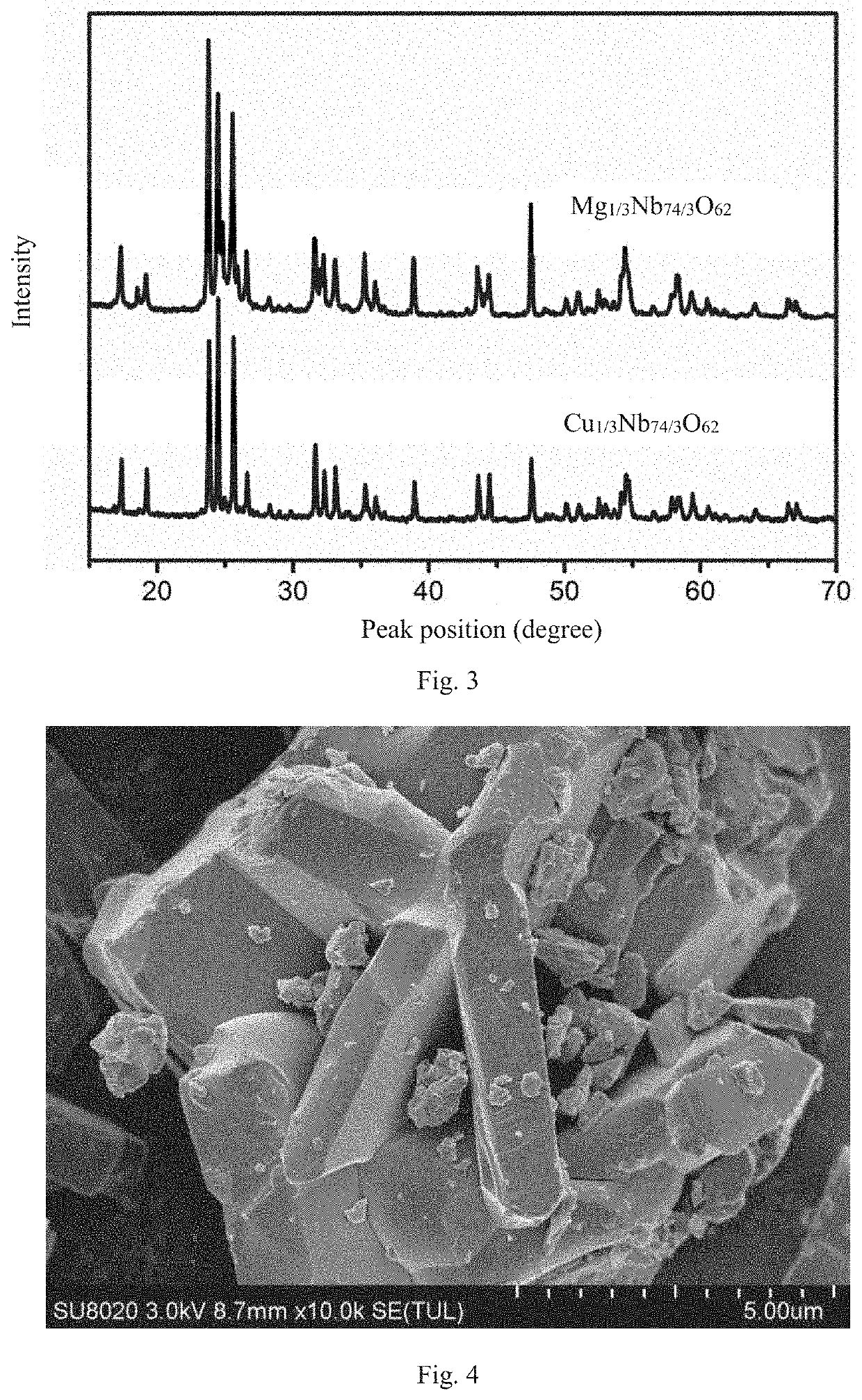Anode Material of Lithium Ion Battery And Non-aqueous Electrolyte Battery
a technology of anode material and lithium ion battery, which is applied in the direction of niobium compounds, cell components, electrochemical generators, etc., can solve the problems of increasing the tendency to generate lithium dendrites, short circuits of batteries, and hindering their application in high-performance lithium ion batteries
- Summary
- Abstract
- Description
- Claims
- Application Information
AI Technical Summary
Benefits of technology
Problems solved by technology
Method used
Image
Examples
example 1
[0067]Example 1 provides a method for preparing Zn2Nb34O87 electrode material by solid phase method, comprising the following steps:
[0068]Mixing a zinc oxide and a niobium pentoxide according to elements molar ratio of 1:17 by high energy ball milling; sintering the mixture at 1200° C. for 4 h to obtain Zn2Nb34O87 powder.
example 2
[0069]Example 2 provides a method for preparing Cu2Nb34O87 electrode material by solid phase method, comprising the following steps:
[0070]Mixing a copper oxide and a niobium pentoxide according to elements molar ratio of 1:17 by high energy ball milling; sintering the mixture at 1100° C. for 4 h to obtain Cu2Nb34O87 powder.
example 3
[0071]Example 3 provides a method for preparing MgNb2O51 electrode material by solid phase method, comprising the following steps:
[0072]Mixing a magnesium oxide and a niobium pentoxide according to elements molar ratio of 1:20 by high energy ball milling; sintering the mixture at 1200° C. for 4 h to obtain MgNb2O51 powder.
PUM
| Property | Measurement | Unit |
|---|---|---|
| temperature | aaaaa | aaaaa |
| temperature | aaaaa | aaaaa |
| pressure | aaaaa | aaaaa |
Abstract
Description
Claims
Application Information
 Login to View More
Login to View More - R&D
- Intellectual Property
- Life Sciences
- Materials
- Tech Scout
- Unparalleled Data Quality
- Higher Quality Content
- 60% Fewer Hallucinations
Browse by: Latest US Patents, China's latest patents, Technical Efficacy Thesaurus, Application Domain, Technology Topic, Popular Technical Reports.
© 2025 PatSnap. All rights reserved.Legal|Privacy policy|Modern Slavery Act Transparency Statement|Sitemap|About US| Contact US: help@patsnap.com



